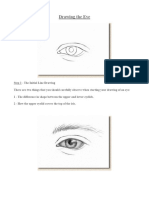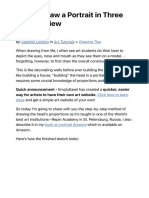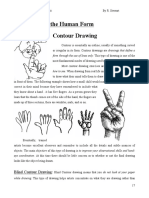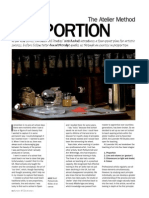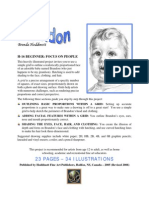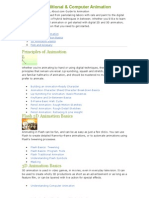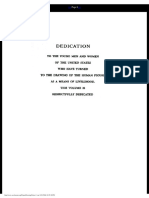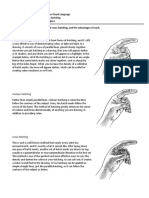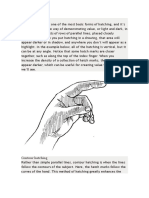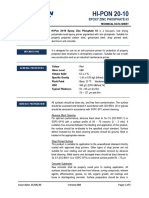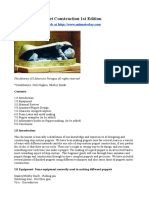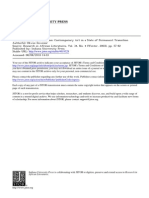Cross
hatching tutorial pdf
Cross hatching method. How do you do cross hatching. How to practice cross hatching.
1 Draw a series of parallel lines. This is called basic hatching, and it’s the first step in cross hatching. There are two types of basic hatching: parallel and contour. Both can be used as a base for cross hatching. Regardless of which hatching type you use, the lines do not cross over one another in standard hatching. You should also try to keep your lines
equally spaced out for seamless, smooth shading.[1] With parallel hatching, your lines should remain straight and run vertically or horizontally. With contour hatching, your lines should follow the contour of the outline you’re shading. When you add basic hatching to your drawing, you'll use this skill to draw parallel lines over the area you wish to
shade.
Practice this by drawing a series of hatching lines on a piece of scrap paper.[2] 2 Add a perpendicular series of lines over the first. To use cross hatching in your drawing, draw a second layer of lines over the first set, going in the opposite direction. This second layer of hatch marks should cross over the first in perpendicular or near-perpendicular
directions. The lines of the second layer should not cross over one another, though. Your cross hatch marks should match the hatch mark type used in your base layer. For example, if you started with parallel hatch marks, your cross hatch marks should also be parallel. Practice this by adding a set of cross hatching lines over your hatching.
Advertisement 3 Draw fewer lines spread further apart to create lighter shading. You can vary the shadow’s value by varying the number of lines you draw. In areas that require lighter shading, draw fewer hatching lines and space them further apart from each other.[3] 4 Increase the lines’ density or add layers to imply darker shading. In sections of
your drawing that require deeper shadows, increase the number of lines and place them closer together. You can also layer additional series of cross hatching lines to make that area appear darker and more heavily shaded.
Alternate directions when adding layers of cross hatching lines. For example, start with a set of vertical lines, then a horizontal set, then a diagonal set, then an opposite diagonal set. This will allow you to build up a deeper, darker shadow effect.[4] 5 Add depth with fine cross hatching. Add even more layers of cross hatching in different directions to
create an extremely subtle and rich shading. The extra layers add even more nuance in tone and value.[5] Fine pencils and fine-line pens are best for this technique, because they can create precise lines that seem to blend together from a distance.[6] Advertisement 6 Rotate your paper to try a new perspective. Cross hatching can take some time to
master, so if you’re having trouble envisioning where shadows should go, try rotating your paper. Look for any areas that you may have forgotten to shade or places where the shadow doesn’t fall correctly. Oftentimes, looking at a drawing for a long time can make it difficult to see problem areas—this trick can give you a new perspective and help you
notice those areas more easily.[7] Advertisement 1 Sketch the outline of an object in pencil. Before cross hatching, you'll need to draw the actual shape or object you want to shade. Find either a real object, a reference photo, or imagine your own object.[8] When practicing the technique, it’s often best to start by drawing a three-dimensional
geometric shape with clear, angular lines.[9] 2 Determine the correct lighting. Before adding any hatch marks, take a moment to look at the object and examine how the light source hits the object and reflect off its surface. This will help you figure out which areas of the drawing should have the lightest shading and which areas need heavier shading.
If you’re drawing from imagination, try to imagine how the light would fall or find a similar object to examine.
Note that the absolute lightest sections will have no hatch or cross hatch marks. Your imaginary light source would hit these areas directly, so they shouldn't have any shadows. Areas and surfaces further away from your imaginary light source should be darker and will require more cross hatching.
If you have trouble imagining a light source and the shadows it would cast, find a photograph of a simple object lit by a single light source. Note where the light and shadows fall, and practice copying this effect with cross hatching. 3 Draw hatch lines where shadows fall on the object. Sketch your base layer of standard hatch marks into the outline.
Keep the hatch marks in each section parallel to one another, even if they curve along the contours of the outline. For this step, use a pencil and press lightly. This way, you can easily erase these lines if needed. Place more hatch marks closer together in sections that need heavier shading.
For sections that need lighter shade, space the hatch marks further apart and use fewer hatch marks overall. The base hatch marks should indicate which areas are darker than others even before you add the cross hatching. 4 Add in cross hatch lines. Sketch a layer of perpendicular or near-perpendicular cross hatch marks over the base layer of
hatch lines. Try to keep the spacing, number, and placement of these cross hatch marks similar to that of the base hatch marks, so areas of the drawing with more hatch marks should also have more cross hatch marks.[10] 5 Go over the drawing in ink. Once you're satisfied with the placement and amount of cross hatch marks, go over the pencil
marks with your inking tool. When working with a nibbed pen, dip it in the ink, then draw a line on a separate piece of scrap paper before moving to your drawing. This allows you to unload some of the excess ink and prevents it from bleeding onto the drawing itself. Go over the outline of the drawing first, then work on tracing each section of cross
hatch marks. Work carefully and try to follow your previously created marks as closely as possible. You can add additional cross hatch marks as needed, but try not to get carried away since you won't be able to undo any of the marks you make in this step. Note that any pencil marks that are still visible after inking might make the drawing look darker
than the final piece will look, so don't worry too much if the overall drawing looks darker than anticipated right now. 6 Erase the pencil marks once the ink has dried. Allow the ink to dry, then use an eraser to carefully remove any visible pencil marks from the final drawing. Wait for the ink to dry before you attempt any erasing. If you swipe the
eraser over the drawing while the ink is still wet, you'll smear the ink and ruin the crispness of your cross hatching.
Advertisement 1 Use a sharp or fine-tipped drawing utensil. Since cross hatching requires you to draw thin lines close together, you'll need to use a fine-tipped drawing utensil. Whether you use a pencil or pen, make sure it’s sharp or fine-tipped in order to make your lines precise. Even if you want the final drawing to be inked, it's still a good idea to
start the drawing with pencil. Use a drawing pencil, mechanical pencil, or a sharpened standard number two pencil. For your inking tool, opt for either a nibbed pen or fine-tip ink pen. Both options work well, so choose whichever instrument you feel more comfortable handling. 2 Make a value scale. Before you start drawing a project, make a value
scale to help you maintain a balanced range of values. Draw 4 identical 1 in (2.5 cm) squares in a line, then fill each box in with different values, going from light to dark. Use techniques such as varying density and adding sets of lines to gradually move from lightest to darkest. This will help you practice creating subtle differences in value.[11] Use a
pencil and some scratch paper for this exercise. As you draw, refer to this scale to determine your desired value range. For example, you could select one value box on your scale to be the darkest value in your drawing. Use your scale to compare with the drawing and make sure you don’t go darker. 3 Use a piece of scrap paper to block off sections.
When drawing, place pieces of scrap paper over places where you don’t want any cross hatching. This will also help you keep your hatching lines neat and avoid accidentally drawing a hatching line too far.[12] Advertisement Add New Question Question Where do you cross hatch in a drawing? Kelly Medford Professional Artist Kelly Medford is an
American painter based in Rome, Italy. She studied classical painting, drawing and printmaking both in the U.S. and in Italy. She works primarily en plein air on the streets of Rome, and also travels for private international collectors on commission. She founded Sketching Rome Tours in 2012 where she teaches sketchbook journaling to visitors of
Rome. Kelly is a graduate of the Florence Academy of Art. Support wikiHow by unlocking this expert answer. Cross hatching is most effective when you think about the lines following the plane of the object you're shading.
For example, if something I'm sketching is round, I would make rounded lines that follow the contour of the object. Or if I were sketching a box, I would use lines going in different directions for the side, top, and bottom planes. Question Doesn't ink make it look worse? And is cross hatching good? That's somewhat subjective. You can use whatever
medium looks good to you. But ink looks more intense and eye-catching than pencil, which many people like.
Crosshatching is a very old form of shading. It is very realistic, and some of the most realistic shading drawings come from crosshatching. Question What are the skills required to ensure that I am correctly shading in the areas that need a darker shade?
Practice, and knowledge of where the light would fall. Shadows are usually opposite, or fall under where the light hits. See more answers Ask a Question Advertisement Drawing paper Scrap paper Sharp pencil Eraser Fine-tip pen or nibbed pen with dipping ink This article was co-authored by Kelly Medford. Kelly Medford is an American painter
based in Rome, Italy. She studied classical painting, drawing and printmaking both in the U.S. and in Italy. She works primarily en plein air on the streets of Rome, and also travels for private international collectors on commission. She founded Sketching Rome Tours in 2012 where she teaches sketchbook journaling to visitors of Rome. Kelly is a
graduate of the Florence Academy of Art. This article has been viewed 170,098 times. Co-authors: 12 Updated: October 26, 2022 Views: 170,098 Categories: Learning to Draw Print Send fan mail to authors Thanks to all authors for creating a page that has been read 170,098 times. Cross hatching is a drawing technique used to create a value range
and add texture to a drawing. The technique involves drawing parallel lines that cross over each other to create a hatched effect. It’s a type of line drawing technique that can be used with a wide range of drawing media, including ink, pencil, etching materials and more.
Cross hatching can be used to create different effects depending on the direction of the lines and the spacing between them.
For example, close-spaced lines will create a darker tone, while wider-spaced lines will create a lighter tone. Lines that are drawn in different directions can also create interesting effects. For example, diagonal lines will create a sense of movement, while vertical and horizontal lines will create a more static effect. Disclaimer: Fine Art Tutorials is a
reader supported site. When you make purchases through links on this site, we may earn a small commission at no extra cost to you. Cross hatching is a type of shading technique, whereby artists will draw parallel lines at two angles that cross one another to create the impression of light and shadow. This is what creates a ‘hatched’ effect’. The
purpose of the cross hatching technique is to create a value range in a drawing. By using this technique, the artist can create the lightest and darkest values, to create a complete drawing. Drawing with this technique is a great way to create the illusion of three-dimensionality on a two dimensional surface. The closer the hatched lines are together,
the darker the area will appear, and the more space there is between the hatched lines, the lighter the area will appear. subtle cross hatching details with soft pencil Cross hatching is an incredibly versatile technique that can be used to create a range of different effects. By varying the spacing, direction and density of the lines, you can create the
impression of form, volume, light and shadow. The main benefit of the cross hatching technique, is that artists don’t need to use tonal shading to represent light and shadow. Tonal shading requires a medium like charcoal or graphite, where depending on the pressure applied, the mark will appear darker or lighter. So artists can use drawing tools like
fountain pens, ink liners or etching tools to create the impression of the subject. To get started, all you need is a drawing tool and some paper. Start by drawing simple shapes like circles, squares and triangles. Once you’ve got the hang of it, you can start experimenting with different mark making methods using the hatching technique. Rembrandt
used a mixture of hatching and cross hatching techniques in this etching You are not limited to making perfectly straight parallel lines, you can draw curved lines to fit with the contours of the shape you are trying to represent.
Combine the cross hatching technique with other drawing techniques, such as stippling, hatching or tonal shading. The only limit to creating the impression of light and shadow in your drawing, is your imagination. Once you’ve mastered shading simple shapes with the cross hatching technique, practice hatching simple subjects, such as fruit. Try
setting up your own still life arrangement to draw from life. This is a great way to improve your observational drawing skills and accurately represent light and shadow from life. Represent light, shadow and form in a drawing by varying the thickness and closeness of lines. Decide on the direction of your hatching. Horizontal lines will give a flat effect,
while vertical lines will create an impression of height. Diagonal lines will bring dynamism to the drawing. Lines don’t have to be straight, some lines will curve to fit the contours of your subject. Vary the appearance of the marks, especially if you are drawing landscapes including rocks, leaves and trees, as by creating more jagged marks, scribbles
and curved marks, your subject will appear more organic and realistic. Combine the hatching and cross hatching technique. This will create a more interesting and textured drawing. If you want to darken an area, don’t be afraid to go over the same lines multiple times. When using pencil, use a softer pencil and apply pressure to create darker lines
for shadow areas.
Use shorter lines with more density to represent the form of the subject.
A greater number of shorter strokes with give the drawing more texture.
Create a simple contour drawing of your subject. Capture the essence of the subject with a basic outline. When cross hatching more complex subjects, you should outline some of the most important details. Identify the lightsource in your subject, as this will help you determine which areas are in shadow. The darkest areas of the drawing will be those
furthest away from the light source. The lightest areas of the drawing can be left white and free of hatched marks, if you’re using a white paper. Now you can start cross hatching the shadow areas of your drawing, using a variety of strokes.
�Start with light pressure and build up the density of lines as you go. Work your way around the drawing, adding more lines and building up the intensity of shading. Choose how close together you want your lines to be.
Closer lines will result in darker areas, while wider spaces will create lighter areas. If you’re drawing with pencil, apply more pressure to the areas that you want to be darkest. As you cross hatch, start to fill in the space between your lines. This will result in a darker area. If you want a lighter area, leave more space between your strokes. Once
you’ve finished cross hatching the shadow areas, you can start adding lines to the midtone areas. These areas should be hatched with lighter pressure if you’re using pencil, using fewer and shorter strokes. The lightest areas of your drawing can be left free of hatch marks, or you can add a few light lines to create a sense of texture. Mix it up and add
some texture to your drawing. Having too many disparate looking lines can look imbalanced and messy, but by drawing with largely consistent marks and then mixing it up at the end with some scribble patterns to represent leaf texture, for example, you can add variety to your artwork. Rembrandt: Self Portrait with Curly Hair Rembrandt created a
series of etchings, using the cross hatching technique to create a large value range. He drew a range of subjects, from self portraits to landscapes. In this self portrait, ‘Self Portrait with Curly Hair’, the highlights in the hair are represented by lighter lines that are spaced further apart from one another. This gives an illuminated and airy feel to the
drawing. Rembrandt: Sleeping Puppy In this drawing by Rembrandt, hatch marks are used to create the illusion of fur. The longer marks on the tail curve to the contours of the form and represent the longer tail hairs. Leonardo da Vinci: Study of Horse This silverpoint drawing by Leonardo da Vinci uses hatching to create soft shading and lines that
curve around the form of the horse. Contour hatching, also called curved hatching is a type of cross hatching, whereby the artist will use curving lines to represent the volume of the form with light and shadow. Linear hatching is created with parallel lines, that can be close together or spaced further apart. This technique is also just called hatching.
Regular cross hatching is a type of hatching that uses intersecting lines, at right angles or diagonal to one another. Pens or pencils with a fine tip work best for this technique. Pencils will allow you to vary the pressure you apply to the paper, resulting in lighter or darker areas. Pens will give a consistent line width. Markers can also be used for cross
hatching, however they may bleed through thinner papers. Drawing exercises will give you the opportunity to practice a range of drawing skills, that are transferable to other areas of art. This may sound really basic, but your accuracy at creating basic, consistent straight lines is important when using this technique. First, start by drawing a series of
short straight lines relatively close to one another, aim to use the same line width and spacing for each.
Then gradually make the lines appear closer together. Drawing long straight lines can exercise your ability at precision and pressure control. Instead of drawing by moving your wrist, hold your wrist still and move your arm with the pencil in long sweeping strokes by moving your shoulder. This way, you’ll be able to achieve longer accurate lines.
When you’re comfortable with the basic lines, you can try to increase your speed. Draw a set of hatched lines, then perpendicular lines that cross over the first set. Time yourself for thirty seconds and see how many marks you can get done. Start by drawing a light circle with a pencil. Then begin adding contour hatching lines that curve around the
form. As you move away from the light source, make your lines darker. Work up to adding cross hatching to the shadowed areas. Create a series of tone strips by drawing a line down a page and then adding hatch marks that get closer together as they travel down the page. Practice making a range of tones, from light to dark. Start by drawing an
organic shape with pencil on paper. It could be a leaf, or a simple flower form. Once you have your outline, begin adding hatching lines within the shape, varying the pressure you apply and the spacing between lines to create different tones. In this exercise, you’ll need a reference photo or still life. Begin by drawing the outline of the object with
pencil. Then begin to add hatching lines, making the lines closer together as they recede into the distance. This will give the illusion of depth and space in your drawing. Find a drawing by an artist you like, it could be a piece by Rembrandt, da Vinci, or someone else. Make sure the drawing includes cross hatching and hatching in the shaded areas.
Analyse the drawing and look at how the artist has created the illusion of space, light and form. Look closely at the hatching techniques used, did they use a mixture of cross hatching alongside other marks? Try to copy the marks they made to create the subject.
You will learn a lot from studying the work of great artists by taking in their approaches to popular techniques and subtleties of their mark making. To improve at cross hatching and drawing in general, it’s important to commit to a regular drawing practice. Get a sketchbook and try drawing for 20 minutes per day. Whether that’s line drawing,
shading or cross hatching, these are all practices that will improve your skills greatly over time. Try the drawing exercises outlined in this guide and when you’re ready to complete a larger piece, break the drawing down into steps and layers so that you don’t get overwhelmed. Practising drawing skills does not always feel easy, but with consistency
you will see the greatest improvements. And that’s it! You’ve now learned how to cross hatch and create the illusion of light and shadow in your drawings. Experiment with different line thicknesses, densities and directions to see what effects you can create. And don’t forget to practice, practice, practice! If you’re just getting started with drawing, we
have a free ebook that we’re giving out to all of our readers. To get yours, join our Facebook Group, navigate to the Guides section and download the book. The group is a space for like-minded artists to share their art, tips and techniques. Whenever I want to finish a quilt quickly and still have it look amazing, I quilt a cross hatch pattern on it. Don’t
believe me? Check out these quilts that I used an easy cross hatch pattern on… My Easiest Baby Quilt Ever (free pattern coming soon) My Christmas Irish Chain Quilt (free pattern) My Choose Joy Quilt (it’s a Block of the Month Quilt) And all of my Glitter Quilt Patterns. Plus even a Big Beautiful Bag (free pattern). So have I convinced you that you
want to learn this beautiful quilting technique that you can sew with your walking foot (or your even feed foot – they are the same thing)? Let me show you… Preparation Prepare for quilting by sandwiching your quilt top, batting, and backing, and basting using your preferred method. After that, you may want to mark your quilt top with diagonal lines
using a fabric pen to help you sew straight and evenly spaced lines.
Certain quilt designs make marking partly or completely unnecessary when quilting with a crosshatch pattern. On the Christmas quilt above, some of the diagonal lines did not need marking because of the diagonal seams in the quilt. However, I did use a ruler and blue fabric pen to measure and mark small ‘tics’ about 4’’ apart for most of the other
lines. You may feel more comfortable drawing the entire lines to stitch over, and that’s fine. Your lines will be nice and straight! If your sewing machine has a guide like the one shown above that attaches to the foot, you can mark just the first line, and use it to help you keep the other lines parallel. My patchwork baby quilt didn’t need any marking at
all because I could easily sew diagonally across the quilt from patchwork corner to corner. In my opinion, a walking foot (or even feed foot) for your sewing machine is a must for straight line quilting like this. Without it the top layer may be pushed and move faster than the bottom layers, causing rippling. An even feed foot does just what the name
says – it helps all the layers to feed evenly. Roll or fold up one side of your quilt so that you can begin quilting at one of the corners. Start sewing on the batting and follow your marked line or sew from corner to corner if your quilt is made up of patchwork squares like the one above.
Sew slowly and smoothly, helping the quilt move through the machine by making sure the front edge of the quilt doesn’t get caught on your sewing machine or table and the back doesn’t fall down off the table and pull from that direction. When you reach the end, sew onto the batting and cut threads. Take your quilt out and pull it all the way towards
you so that you can start the next line to the right of the first and going in the same direction. Continue sewing lines moving to the right and you will notice the lines getting shorter and shorter until the last one. Now turn the quilt all the way around 180 degrees and quilt the rest of the lines in the opposite direction. (This quilt was not a square so my
second set of lines didn’t start at the corner, like the first.) When you have completed diagonal lines across the entire quilt, it may be time to mark one or more lines that run perpendicular to the first set. Mark as needed, and then continue quilting the rest of the lines. When you are done, trim away the extra batting and backing and you are ready for
binding! Happy sewing, Disclosure: some of my posts contain affiliate links. If you purchase something through one of those links I may receive a small commission, so thank you for supporting SewCanShe when you shop! All of the opinions are my own and I only suggest products that I actually use.















